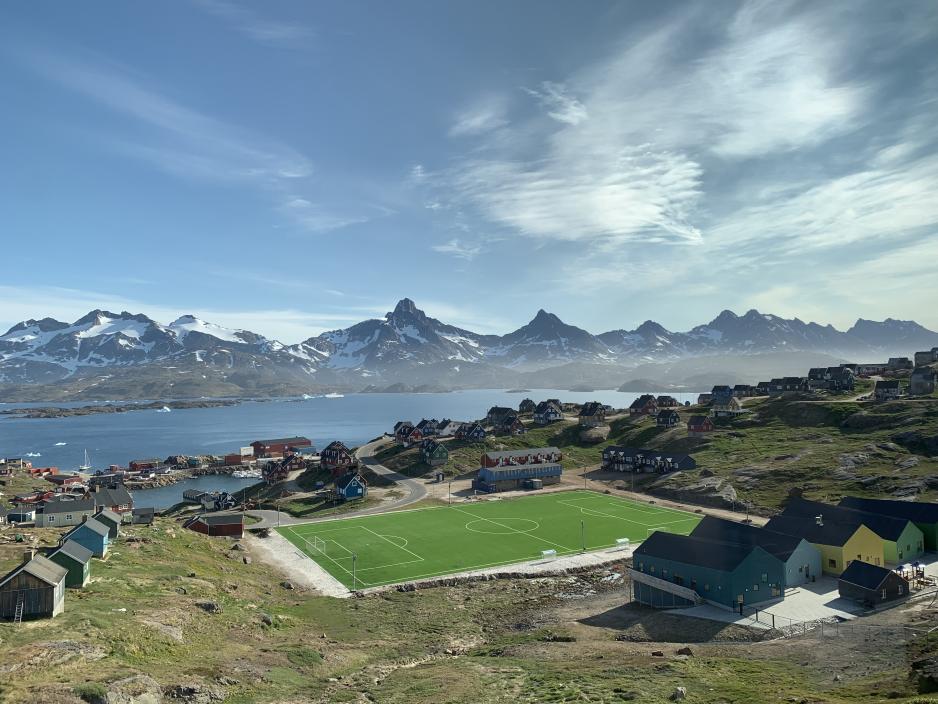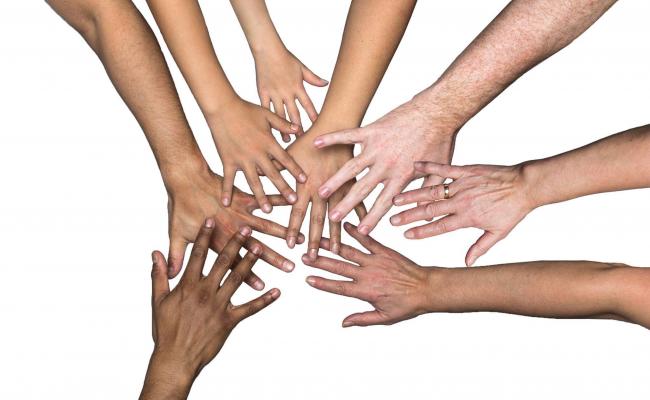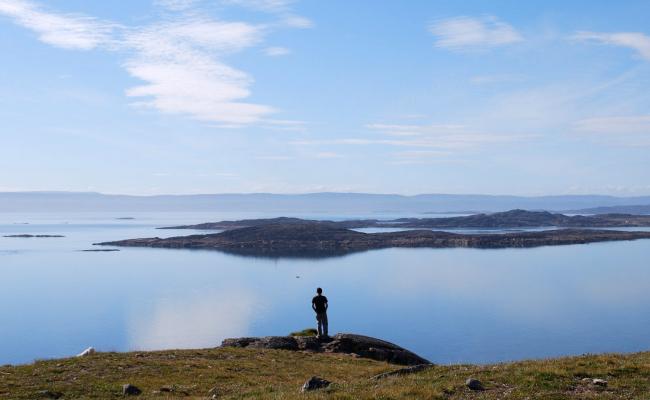Alcohol, gambling and cash increase risk of sexual abuse of Greenland’s children

In Tasiilaq, the sexual abuse of children and youth is a rampant problem linked to many other societal issues. (Photo: Ray Swi-hymn/flickr)
When parents or caretakers are too drunk to be attentive to children and youth, they are in danger of being sexually abused. Moreover, parents and professionals alike often lack the knowledge on how to recognize the signs of abuse.
Alcohol plays a big part in the sexual abuse of children in Greenland, however not always in the direct sense usually assumed. When parents or caretakers are too drunk to be attentive to children and youth, they are in danger of being sexually abused, concludes a report by Greenland’s police. Moreover, parents and professionals alike often lack the knowledge on how to recognize the signs of abuse and how to treat affected children.
Alcohol involved in 25% of abuse cases
In 25% of the cases of sexual abuse of children and youth in Tasiilaq, East Greenland, alcohol has a direct influence. However, how big its influence is depends on the type of crime. In particular when it comes to rape, alcohol is a factor in at least 44% of the reported cases. By contrast, it affects around 19% of cases of sexual relations with children younger than 15. The role that alcohol plays is thus complex. These are the conclusions of a report published by Greenland’s police, which analyses sexual abuse cases and draws on the knowledge and experience of professionals in that field.
Tasiilaq area comprises the city of Tasiilaq, as well as the five villages Kuummiut, Kulusuk, Sermiligaaq, Tiilerilaaq, and Isertoq. From 2014 to 2018, 191 cases of sexual abuse of children were reported in Tasiilaq, a vast majority of them happening in private homes rather than public places. Girls between the age of 10 and 14 were the victims in half of the reports in the four years examined and therefore the most vulnerable group. The perpetrators were mostly 15- to 30-year-old men, who knew the victims prior to the assault.
Disproportionate number of cases in Tasiilaq
Relative to its number of inhabitants, a disproportionately high number of sexual abuse cases were reported in Tasiilaq compared to the rest of Greenland. While in 2018, 27% of reports on sexual relations with children under the age of 15 were in Tasiilaq, the community’s population comprises only 5% of Greenland’s population. Nevertheless, Member of Parliament Aaja Chemnitz Larsen points out to HNN that the issue needs to be tackled all over the country: “27% of the sexual abuse takes place in Tasiilaq, which means 73% of the abuse is taking place other places in our country. This is what I would like to eliminate all over Greenland.”
Also read
Comparing Tasiilaq and Greenland to the rest of the world, it is important to note the tremendous economic and geographic differences. In a written statement to HNN, Anders Kok Hansen of Greenland’s Ministry of Social Affairs and Justice underlines: “Many of our challenges are not comparable to Denmark or other countries, simply because of the geographic size of Greenland and not least the difficulties of mobility between towns. Furthermore, Greenland educational level and professional skill level is not comparable to Denmark.”
Barriers to reporting abuse
One of the factors contributing to the high number of reports in Tasiilaq could also be the high tendency among residents to report abuse. Speaking to HNN, Camilla Palmann of Greenland’s Police force clarifies: “The crucial difference between Tasiilaq and other towns and settlements in Greenland is that the citizens in Tasiilaq have chosen to report sexual abuse.”
However, an investigation by the children’s rights institution MIO announced that a high number of abuse cases is still not disclosed to the police and therefore escapes the statistics. Palmann adds: “Therefore, Greenland Police is currently working on a report that examines which barriers people hold, which make them not likely to report sexual abuse. The report is focused on Southern Greenland and Qaanaaq in North Greenland as we assume sexual abuse is underreported in these areas in particular.”
Abandoned children
In many cases, alcohol plays an indirect role in the sexual abuse of children and youth.
Several experts argue that the biggest risk is when the parents or caretakers of the children are under the influence of alcohol and therefore not able to watch the children adequately.
The same is true for parents, who gamble, as they don’t pay enough attention to their children. In both cases, the children are left to their own devices. According to Chemnitz Larsen, different initiatives aim at reducing gambling. Kok Hansen subjoins: “The strategy especially aims towards the youth, who are most likely to change behaviour.”
The payout of the salary, tax refunds and child money also increase the risk, as parents have more money at their disposal with which to buy and consume alcohol. For this reason, Sermersooq Municipality, which Tasiilaq is a part of, has started an initiative that gives children and youth a safe space to meet every last Friday of the month. This way, they can avoid their drunk or otherwise occupied parents. However, this can be seen as legitimizing parents’ drinking and neglect of their children and as denying their responsibility.
“The young feel abandoned there in this town surrounded by ice,” Marion Touboul, reporter for the TV channel France 24, claims in an interview and documentary. “Torn between tradition and modern life, it’s the young that are most vulnerable.”
Unemployment increases risk of abuse
In addition, some contextual factors make children more vulnerable to sexual abuse. This affects in particular children of dysfunctional families, families where one or both parents are alcoholics, physically abusive, have a low income, a long history of unemployment or where the parents were teenagers when the children were born.
In order to fight against the sexual abuse of children and youth, it is therefore necessary to improve the societal structures in Tasiilaq, such as the high level of unemployment. Kok Hansen on the economic situation in eastern Greenland: “All towns on the east coast are isolated, and the job opportunities are limited. Many inhabitants are on some kind of social welfare scheme.”
Solving problems at their source
Another aspect of combating the sexual abuse of children is to focus on the source of the problem: the treatment of the perpetrators, who often have suffered from some sort of abuse or assault in their lives and grew up in dysfunctional families. Treating the long-term effects of sexual abuse, for instance through psychotherapy, is likely to reduce the number of sexually assaulted people becoming perpetrators themselves. Furthermore, a better integration of this population group into the labour market is required.
Kok Hansen points to three already completed projects focused on anonymous counselling. “Since there are many small communities, it is important to consider the privacy of the victim and perpetrator. Nonetheless, we would like to stress, that despite anonymous treatment, perpetrators will still be judged by the rules of the law.”
Direct link to suicide
Alcohol abuse and the sexual abuse of children are two of the main causes of the high number of suicides. “On average, they bury one teenager here every month,” the documentary by France 24 elaborates. The sister of a teenager, who committed suicide, barely retains her tears when she discloses: “When our parents drank, they said awful things to us, like they didn’t want us anymore. They are waiting for us to die.”
“It’s terrible, but this way out by suicide, we’ve all been tempted by it at some time,” admits another teenager, Eino, who founded a theatre project to enable the town’s youth to address the issues they are struggling with. It is extremely important to shed light on social issues in order to adequately tackle them. Kok Hansen adds: “Sexual abuse has been, and still is, a big problem and a taboo in our society. We have been making a lot of progress in recent years, where the change of mentality and working on taboos have been the main progress. We have seen an increase in the number of people who are coming forward and confronting their past, which is a huge step forward – especially in small communities where everybody knows everyone.”
One psychologist from Nuuk visits Tasiilaq every month, but he only stays two or three days, which is far from sufficient. It is difficult to incentivize people to move to East Greenland because of the limited opportunities; hence, the municipality are experiencing difficulties hiring professionals to make preventive social measures locally,” Kok Hansen explains to HNN.
Lack of knowledge
A major problem is also the substantial lack of knowledge on sexual abuse. On one hand, many children and youth in the villages forming part of Tasiilaq are not informed about what constitutes abuse. Some even consider sexual abuse a normal part of their life and are not aware that it is wrong for adults to get close to them in a sexual way. This often changes when/if they move to Tasiilaq city to pursue their education. According to Kok Hansen, “in many cases, the victim realizes the abuse many years later.”
On the other hand, professionals working with children, as well as affected children’s parents, lack the knowledge on how to deal with cases of sexual abuse and how to talk to the afflicted children.
Difficulties recognizing signs of abuse
Even more worrisome is that many are not able to recognize the signs that children were abused or assaulted. The fact that a great part of Greenland’s population has suffered from sexual abuse at some point in their lives makes it even more difficult for them to recognize the signs. Among the generation born in 1995 or later, 20% have been subject to abuse. Among those born in the 1960s and 1970s, 30% and 40% respectively have been affected.
Asking Denmark for help
In order to adequately address the crisis, the government of Greenland called on Denmark to help with the necessary funding and expertise. Aaja Chemnitz Larsen, Greenland’s representative in the Danish Parliament, revealed to HNN: “Greenland has asked for help after pressure from our party and others. 80 million DKK has been agreed upon in Denmark and 20 million DKK in Greenland to help address early prevention of sexual abuse of children. This was the plan I presented and I’m proud it’s a reality now. “
Denmark’s Minister for Social Affairs and the Interior, Astrid Krag, pledged 730,000 USD in emergency funds and a team of psychologists to immediately attend to the issue, while more support is confirmed for next year.
“Let’s set limits”
“Killiliisa – Lad os sætte grænser” (Let’s set limits) is a strategy by the government of Greenland, Naalakkersuisut, to reduce sexual abuse from 2018 to 2022. The strategy emphasizes that the issue needs to be tackled while paying attention to the many factors linked to sexual assault, such as alcohol abuse, abortions, suicide, and violence. As a result, it is based on a strong cooperation between different disciplines with an advisory group composed of members from the social services, education, health, crime prevention, police and several others. One of the strategy’s six main elements is the expansion of information campaigns.
Killiliisa has “been vital to change the perception and taboo regarding sexual abuse,” Kok Hansen argues. “One of the biggest impacts regarding Killiliisa have been a group of role models, who have been travelling across Greenland to share their experiences with sexual abuse, and how it is possible to live on and have a good life despite sexual abuse. We have seen an increase in the number of people reaching out for help.”
Local solutions needed
While changes should come from inside, Chemnitz Larsen argues that the issue requires the collaboration with qualified professionals in order to acquire more knowledge, and a permanent investment. However, solutions need to be specifically tailored to the situation in Greenland. She further commented to HNN: “We need local solutions and there are resources in every small community that needs to be involved.”
Killiliisa also attaches great importance to the strategy’s local adaptation to the relations, possibilities, and needs stemming from substantial social, cultural, logistic and socio-economic differences between Greenland’s communities. Kok Hansen concludes: “Since Greenland is a very special place and many small communities are isolated, it has been important to make a strategy and measures that suits our settlement pattern and local culture. Killiliisa has made a huge difference for many, and we are proud of the strategy, which is also very relevant for other arctic regions and/or isolated communities.”


